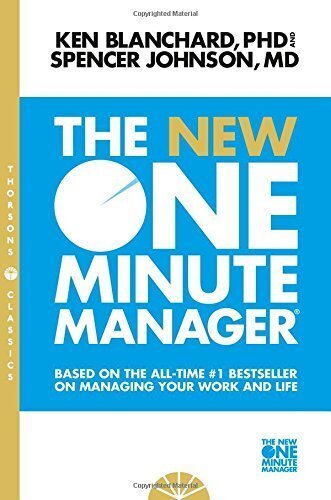
A wonderful, concise read that does an effective job of getting across a few useful principles of management. It’s told in narrative form, with a story focused around a fictional super-manager, and how he runs a business, so it can feel cheesy and slightly cringey to read, but despite that, the format works to get the core lessons across. The book is super short and manages to deliver a lot of value in just a few hours of reading.
Here are some of the key insights for me:
One minute goals
The book recommends a “one minute goals” system that works as follows:
- Plan goals with your direct reports.
- Make sure the goals make it clear what success looks like.
- Write down the goals, with due dates, on a single page.
- Have the direct reports review the goals daily, which should only take a few minutes.
- Encourage your reports to reflect if what they actually do day-to-day matches their goals.
- If their actual behavior doesn’t match their goals, encourage them to rethink what they are doing.
- Have direct reports send you updates on their goals regularly so you can provide feedback.
One minute praise (catch them doing something right)
One of the biggest motivators is feedback. Many managers only look for the things their direct reports did wrong, so the only feedback they provide is criticism. It is absolutely critical to also notice the (many more) things they do right, and to provide one minute praise for that:
- Praise people as soon as possible.
- Let people know what they did right—be specific.
- Tell them how good it makes you feel and how it helps.
- Pause for a moment to let them feel it too.
- Encourage them to do more of the same.
- Make it clear you have confidence in them and support their success.
It’s important to provide praise not only when someone gets something 100% correct, but also at every step along the way.
Imagine a child learning to walk: do you withhold praise until they are able to walk 30 feet unaided? Of course not. Instead, you praise them for every small thing: wow, you were able to stand! You celebrate with a hug and kiss. And look, you took a step! Another big hug and kiss. And now two steps! More praise and celebration.
This constant praise acts as a powerful motivator, and one that everyone needs, not just small kids. To help someone become a winner, you need to catch them doing something approximately correct, and provide praise, even before it’s perfect. This is what will help them move in the right direction, towards the desired result.
So, at the beginning, when someone is learning something new, you need to pay extra attention to them, spot every small step of progress, and provide praise and encouragement. Eventually, they will start doing it totally correct, and then you only provide praise for that; but if you don’t provide praise for approximate correctness early on, they’ll never get to full correctness.
One minute redirect
If someone is doing something wrong, do the following:
- Check that the goal is clear. If it isn’t, take responsibility for that, and clarify the goal.
- If the goal was clear and something went wrong, redirect as soon as possible.
- Confirm the facts first and review the mistake together—be specific.
- Express how you feel about the mistake and its impact on results.
- Pause for a moment to allow them to feel concerned about what they’ve done.
- Tell them they are better than their mistake, you think well of them as a person, and don’t expect a repeat.
- Remind them you have confidence in them and support their success.
- When the redirect is over, it’s over.
When doing redirects and talking about something someone did wrong, separate the person from their behavior. You must make it clear that it was the behavior that was bad and not the person. If they think you are attacking them personally, they will focus on defending themselves, believe the problem is the way you’re treating them, and refuse to take any responsibility; instead, you want them to focus on what they did, and how to change that.
That’s why you need to tell them precisely what behavior was wrong (be specific and focus on the behavior), how that made you feel (so they know why it matters), and to remind them that they are better than that (so they understand you believe their performance was bad, but they are good).
Teaching others to solve problems
If a direct report hits a problem, ask them the following:
- What is the problem?
- What is your desired outcome? If you don’t know what you want, figure it out!
- What causes the discrepancy between what’s actually happening and the desired outcome?
- What are you going to do about the discrepancy? What are the options?
- Which of those options will achieve your desired outcome? What are the trade-offs?
In short, you’re walking them through the process of solving the problem themselves.
Summary
The book has a lovely summary page at the end:

